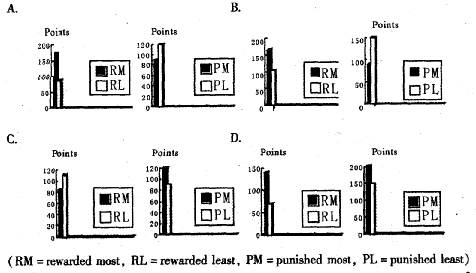题目内容
Most teenagers are given pocket money by their parents in United Kingdom of Great Britain and Northern Ireland. Teenagers get between £7 and £20 a Week. They spend it on fast food, clothes, the cinema, concerts, magazines and mobile phone.
Lazy parents?
37% of parents pay teenagers to clean the room, and 66% of parents pay teenagers to take the rubbish out.
Lazy teens?
51% of teenagers don't make their beds before they leave home. Only 13 % of teenagers wash the car for money. Some parents even pay their teenagers to do their homework.
Equality? Not yet!
Boys get more money than girls for most odd jobs. For washing the dishes, boys get about £4 and girls get about £1.
And if you need some more money?
Teens get an extra £250 a year out of their parents except pocket money! About 50% of teens get gifts of money from their grandparents. Go to Mum if you need extra money! She gives more than Dad.
Where you live makes a difference!
Parents in Scotland and the North of England give the most pocket money.
Spending
51% spend their money on clothes. 30% buy cosmetics, jewelry and toiletries (化妆品). Less than 40% of teenagers save their money.
Earnings
Here is what some children told us about their pocket money: I get £30 a month. I have to take the rubbish out and tidy my room. -- Emma, 15, Edinburgh
I get £10 a week. But I have to clean the car and the house and load and unload the dishwasher. I usually save the money. -- James, 12, Sheffield.
I get £7.50 a week. I have to be "good" but I don't have to do any jobs for the money. -- Lain, 13, Cardiff.
I get £5 a week. But our neighbors go away a lot and they give me £25 a week for looking after their cats. -- Richard, 13, Belfast.
68. Which of the following would be the best title for the test?
A. How to get pocket money. B. Pocket money in Britain.
C. How to spend pocket money. D. How teenagers everywhere get pocket money.
69. Which of the following statements is true according to the passage?
A. Most parents are so lazy that they let their children do housework.
B. Most teens are too lazy to do housework unless they are given pocket money.
C. Boys and girls aren't equal in getting pocket money when they do odd jobs.
D. It isn't right for children to ask for pocket money.
70. We can infer from the passage that.
A. boys earn the same amount of money at home as girls
B. only rich parents give children pocket money
C. girls earn more money at home than boys
D. most children don't save their pocket money
71. Who probably gets the most pocket money for a whole year according to the passage?
A. Richard. B. James. C. Lain. D. Emma.
小题1:B
小题2:C
小题3:D
小题4:A

练习册系列答案
相关题目

 believe that the only way we can be special is by being better than someone else, but we are often disappointed. There will always be someone out there who is better than we are at something. There are plenty of people around who may not be as smart as we are but who are better at sports. Or they may not be as good-looking, but they have more money. It is impossible for us to be better than everyone else all the time.
believe that the only way we can be special is by being better than someone else, but we are often disappointed. There will always be someone out there who is better than we are at something. There are plenty of people around who may not be as smart as we are but who are better at sports. Or they may not be as good-looking, but they have more money. It is impossible for us to be better than everyone else all the time. are
are  .
. adults than children ,McDaniel noted.
adults than children ,McDaniel noted. e studies are not true for everyone
e studies are not true for everyone